Plant a Gorgeous Gladiolus Flower Garden
Updated: Nov. 06, 2023
Easy to grow and guaranteed to add bursts of showy blossoms to any garden, gladiolus flowers, classic summer
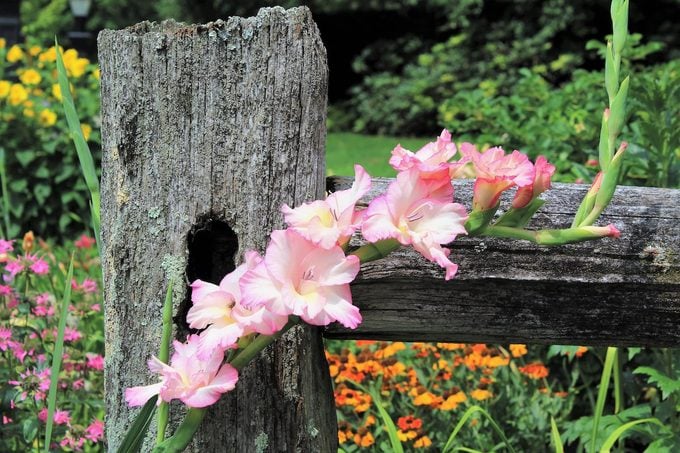
Gracing gardens for generations, the fast-growing gladiolus flower is a member of the iris family, featuring multiple funnel-shaped blossoms clustered together alongside narrow, bladelike leaves. Named for gladius, the Latin word for “sword,” the genus is also known as flag flower and sword lily. Glads, as they’re often called, add drama to small spaces and are perfect for cut-flower arrangements.
Most varieties are hardy in Zones 7 to 10, but some are rated hardy to Zone 5. They’re easy to plant, deer resistant and affordable, says David R. Clark, a certified nursery and landscape professional with the New York State Nursery and Landscape Association Inc., in Hamburg, New York.
“You can buy a bag of 45 unnamed corms from your local garden center or home construction store for $17 to $20,” David says.
Discover more pretty flowers for a cutting garden.
Gladiolus Flowers Have an Exotic Past
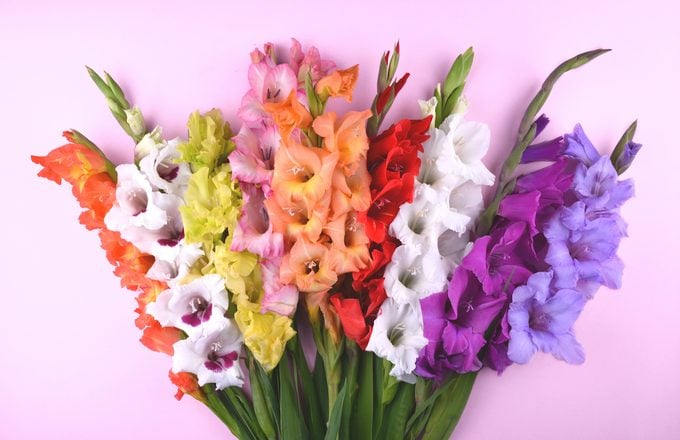
Gladioluses flourish in many North American gardens, but most varieties are native to arid African and Mediterranean areas, David says.
“There are more than 300 species of gladiolus worldwide—260 originating from South Africa, 76 from tropical Africa and 10 Asian and Mediterranean European ones, which are some of the hardiest,” he says.
Plant breeders developed the first large-flowered hybrid types in the late 1830s, and now glads offer amazing color and texture.
Does your birth month flower have special meaning?
Sizes, Shapes and Colors for Any Garden
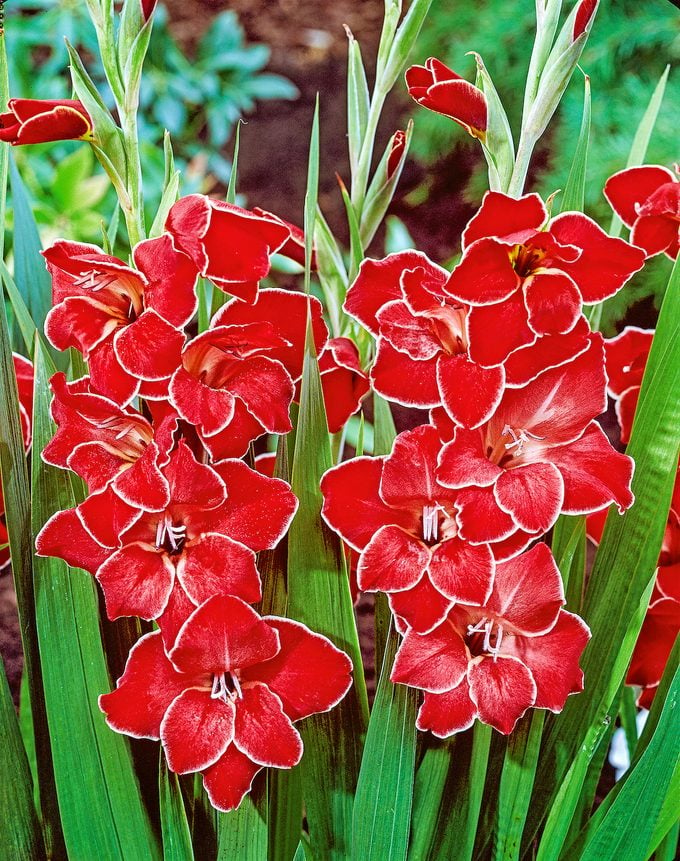
Gladioluses range in height and flower shape, with hues including solid orange, pink, white, red, lavender, green, white and brown, plus many bicolor, streaked, ruffled and double forms.
Grandiflora hybrids rise up to 6 feet tall, with classic trumpet-shaped blossoms measuring about 6 inches across. These hybrids feature 12 to 20 flowers per stem. Dwarf grandiflora hybrids grow up to 3 feet, with 3-inch-wide open-faced blossoms. This type includes butterfly glads, distinguished by their bright centers.
Nanus hybrids bloom in early to midsummer, standing 1 to 2 feet tall with about six blooms per stem, making them perfect for mixed beds. Find them in red, white, pink or rose.
Byzantine glads, which have naturalized in many southern gardens, bloom earlier than grandifloras. They grow to 3 feet tall with 10 to 12 tubular magenta flowers per stem. Dalenii hybrids grow 2 to 4 feet tall and can be recognized by their hooded blossoms. Hardier than grandifloras, they weather winters in Zone 6 or warmer.
“One hardier species, Gladiolus murielae, evolved in Abyssinia (modern-day Ethiopia) and Madagascar and is called the Abyssinian or peacock gladiolus—it’s shorter and pure white with a butterfly shape in the middle that has a lavender or raspberry color,” says David, noting this fragrant variety blooms later in the summer.
Give Gladiloluses Proper Care
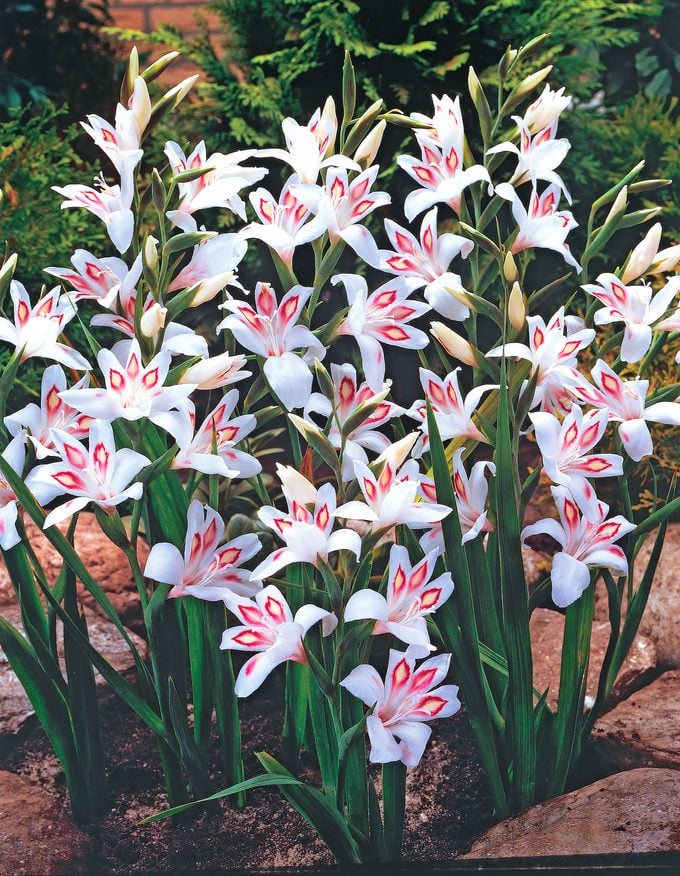
Glads can be grown in cutting or perennial gardens, pots, raised beds and vegetable gardens. These flowers do best with at least six hours
of full sun daily, according to David.
“They like well-draining, moderately fertile soil,” he says. “If you have healthy soil, you’ll have healthy plants, so I’m a big proponent of soil testing.”
For maximum impact, David recommends planting gladiolus corms a few weeks after the last spring frost in groups of seven to 10 that are about 5 inches apart.
Fertilize according to your soil test results. Or, David says, “Buy a 5-10-5 or a 5-10-10 fertilizer and put down 2 to 3 pounds per 100 square feet, plus some compost.”
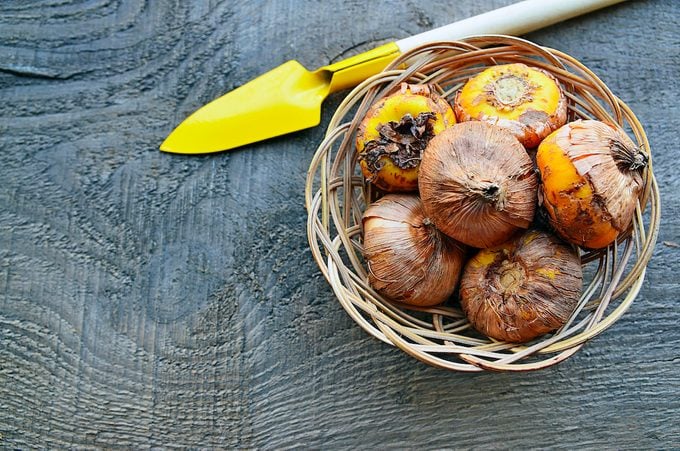
Plant corms 4 to 8 inches deep, depending on which variety you’re growing, and water well. Flowers start opening about 80 days after planting. For continuous blooms, plant additional corms every other week until early July.
“Gladioluses need good air movement to avoid insect and disease problems, so don’t plant them around walls and nonventilated fences,” David says.
Miniature varieties don’t require staking. Taller glads won’t need support if they’re planted in clumps among large dahlias, canna lilies or benary zinnias. To ward off pests such as aphids, thrips and spider mites, David suggests keeping the plants healthy with at least an inch of water twice weekly.
“If you see pests or if your plants are sticky, squirt them with a good blast of your garden hose a couple of times a week,” he says.
When to Harvest Gladiolus Flowers

A pro tip from David: Cut gladioluses will last longer if you harvest them when the bottom two flowers are fully open.
“Harvest in the morning because that’s when there’s the highest moisture content in the cells,” he says. “Leave four spiky leaves on that plant in the ground so it can recharge itself and make a new corm that you could possibly harvest in the fall. If you use a professional floral water fortifier that contains pH adjusters, sugar and biocide to keep the water clear, they should last up to two weeks with beautiful curvaceous growth where the tips bend toward the light, and they’ll look fabulous.”
Where glads are not hardy, dig up corms, cut off all but an inch of foliage and let them dry for two weeks indoors before storing in
a cool, dry place.
Grow a cutting garden for beautiful bouquets.
5 Unique Gladiolus Flowers
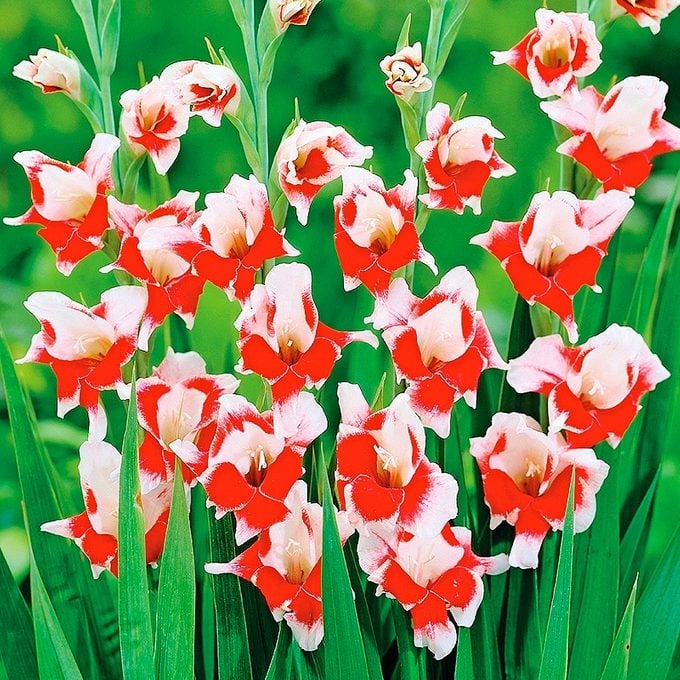
- Mon Amour features a traditional pastel combination of pink, soft yellow and ivory, with a raspberry bead in the center.
- Bizar Dutch features a two-toned, red-and-white flower that attracts hummingbirds. It contrasts nicely with solid glad varieties, and its compact size means it does not require staking.
- Green Star provides a punch of color in flower beds with its lime green blossoms sporting ruffled edges.
- Nymph’s creamy white petals have a purple-rose mark, and the plant adds a touch of elegance to garden beds. This fragrant variety is hardy and flowers earlier than other glads.
- Atom Hardy is a late-summer bloomer that’s worth the wait, thanks to its butterfly-shaped, boldly orange-red, curled petals outlined in silvery white.




















